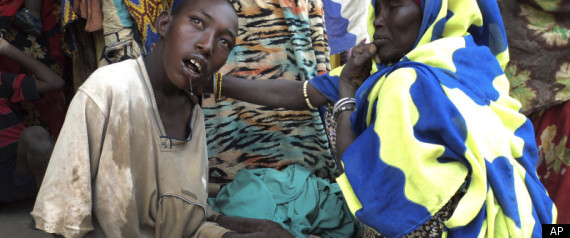
Photo: AP
Two new studies done in Africa show that antiretroviral drugs can prevent people from being infected with the AIDS virus, HIV.
The findings in Kenya, Uganda and Botswana show that if HIV-negative people take one pill daily, they can reduce their risk of infection by up to
73 percent. It’s called pre-exposure prophylaxis (PrEP). The studies were done on couples in which one partner was infected and the other was not.
73 percent. It’s called pre-exposure prophylaxis (PrEP). The studies were done on couples in which one partner was infected and the other was not.
The findings are “significant on several levels,” said Dr. Cate Hankins, chief scientific advisor to UNAIDS.
“We had an indication that this would work from the iPrEX trial that reported in November about the use of antiretrovirals among men who have sex with men. And that trial found a 44 percent reduction in risk for men who took this combination tablet. That’s tenofovir / emtricitabine once daily,” she said.
That was followed by the FemPrEP study on whether the regimen would work on women. But the study was stopped early when researchers concluded it appeared not to provide women with the same benefits.
“These two trials reporting today firmly show that this does work for women and show for the first time that this works for heterosexual men,” Hankins said.
Another option
“We now have an additional tool in the toolbox for HIV prevention. So we have treatment for prevention, which was announced in May, where a person who has HIV infection starts on treatment early and is less likely to transmit,” she said. “Now we have antiretroviral prevention, where an HIV-negative person can take a drug on a daily basis and not get HIV infection or have a reduced risk of HIV infection.”
There is also the tenofovir gel, a microbicide, shown to be effective in preventing HIV infection for women when used before having sex. The CAPRISA 004 microbicide trial was done in South Africa. Follow-up studies are planned. Other prevention methods include male circumcision, using condoms, having fewer sexual partners, delaying sex and avoiding penetrative sex.
30 Years on
Thirty years into the HIV/AIDS epidemic, Hankins said, “I think we’re in a whole different era. And I think we really do have a chance to make this a tipping point and to reach the goals that we’re pushing towards.”
At June’s U.N. High-Level Meeting on HIV/AIDS, countries set a goal of reducing sexual transmission by 50 percent by 2015.
“Now 2015’s not that far away,” said Hankins. “But with these new tools to add to what we already have, we have a good chance of being able to reach that 2015 goal.”
Why Africa?
Conducting the studies in three African countries affords researchers some benefits.
“I think it’s very important. These are areas with high incidence. It makes it much more efficient to do a study in a place that has high incidence to get an answer earlier,” she said.
These countries are now expected to help with rollout studies to answer questions about how best to administer the drugs in real life settings. The findings will help UNAIDS and the World Health Organization set guidelines.
Until then, low and middle income countries will probably delay implementing the new prevention method. Insurance companies in developed nations are also expected to wait for the guidance before providing coverage.
“I think we’re going to see a very rapid move now to look at the data in depth. So I doubt very much if it’s going to be available tomorrow anywhere, but it’s hopeful that new guidance could come out by the beginning of 2012,” said the UNAIDS chief scientific advisor.
Cost
The cost of the combination pill can vary from country to country. In some places it may be 25 cents a day as a generic. In other countries, it may cost considerably more.
“The company that makes that pill, Gilead, has stepped forward just this week to become the first company to join the patent pools program, which will bring down prices of drugs. So we’re hopeful that this can become a financially feasible new prevention modality,” said Hankins.
UNAIDS estimated that only half of the 33 million people living with HIV know their HIV status. The agency called for a significant increase in testing so people can take advantage of new prevention and treatment programs and reduce the spread of HIV.


